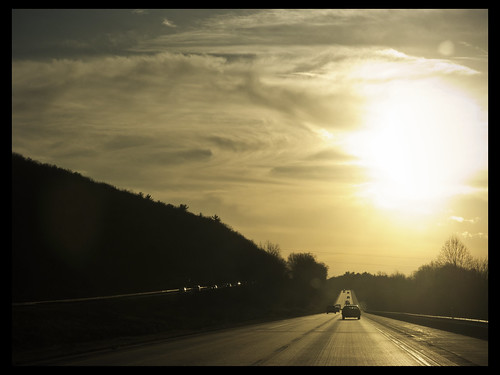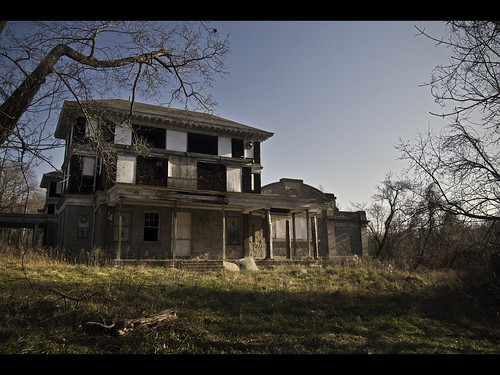Immediately after my accident and the month and a half or so into the recovery phase that logically followed, there was one dominant priority at the forefront of my mind. Get a camera. On a personal level, it was a rather telling thing that the first thing that I felt compelled to address after such a traumatic event was the acquisition of a replacement imaging tool. Really solidified the importance photography has in my day to day life. The funds weren't present for immediate investment in a replacement system, what with all the medical billing shenanigans going on at the time, so I looked at the market of pro-sumer compacts that had always appealed to my inner minimalist and I dropped the necessary half a C-note on the best of the best available, Olympus' flagship compact, the XZ-1.
It's a tiny little thing. Pocket-able, unlike the Canon G10 which I used avidly maybe a year or so before. In the hand, it just doesn't feel like all that impressive of an instrument, more akin to your grandmother's Kodak branded point-and-shoot plastic box than a professionally oriented tool. But I'll be damned if the thing doesn't take occasion to put even my larger format systems to shame. It has some undeniable strengths.
More and more I find myself compelled to put the unique imaging latitude of the XZ-1 to use in favor of the E-P3 system, especially when the subject of interest in outdoors and in waning light. I couldn't possibly begin to express why it is able to do so, but the RAW files it produces have an absolutely magic quality to them. Despite the diminutive sensor backing it, highlights have a wonderful shoulder to them in their transition into middle tones (which I admittedly screw up almost habitually by cranking the recovery slider up to 100, an unfortunate instinct). The dynamic range of which the sensor is sensitive to is unreasonable broad for such tiny piece of silicon, very readily bringing out much detail in shadowed areas without the expected sacrifice of highlight retention typical of sensors of its size. Whatever programming mastery backs the unit is as wonderful as it is perfect. Colors, noise (up to ISO 200 anyway), dynamic range, they all simply... impress. And they do so with a very analog, candid, expired film look and feel that resonates deep with me as I'm often reticent to return to film these days. To have a sensor that produces images very much akin to the look of old, washed out film (but with enough digital pizazz to come across as clean and rendered with intent rather than happy chance) is like a dream come true.
My fondness of the XZ-1 is likely rooted with my introduction to photography in the thought-out, less casual sense. Sure, I'd snapped a few with old film cameras before, gone through my share of film for fun, but it wasn't until getting my hands on that first Kodak DCS digital camera, that 1 megapixel clunky behemoth that ushered in the digital era of imaging, that I ever took photography to heart as a serious art form. Up to then I was all about traditional media, charcoal, pen, colored pencils, occasionally paint. Perhaps the reason why mirrorless cameras resonate with me in general is based on how I learned to compose and photograph in the beginning. The viewfinder of that old Kodak was miserable and tiny, useless for most applications and especially in low light. It became a much more comfortable and second nature habit to use the live view of the larger back screen to compose the photograph, much like I would visualize a subject for prospective charcoal sketch or painting. It just made more sense to work in that way. Only years later would I acquire my first DSLR and learn what a viewfinder could actually be, but I still felt more comfortable composing on a screen than via pentaprism. Old habits die hard, I suppose. About the only thing the pentaprism permitted over composition on a screen was an abstract personal connection to the subject, something that only ever had poignant affect when photographing people, but that's a whole other subject entirely. Point being, I feel more comfortable composing on a large screen, at arms length, so to speak, because it hearkens back to the way I would visualize before approaching art in more traditional media.
It has its limitations. And I like that. The limits are the challenge the tool presents the user, and while most people depict those as shortcomings of a lesser camera, I take them on as personal challenges against which to combat, to force the strongest possible image and maybe even break that glass ceiling. That is perhaps what I feel myself doing every time I use the XZ-1 in place of its (at least technically) more capable older brother. Compacts aren't supposed to present a shoulder to tone curves. Compacts aren't supposed to be so damn sharp (and let me tell you, the Zuiko glass in front of that tiny sensor out-resolves it by several orders of magnitude, so much so that wide open it's unreasonably sharp). Compacts aren't supposed to present a width breadth of tonal range, allowing detail retention in shadows and highlights alike. They simply aren't designed with that intent in mind. Compacts are made for the casual shooter, or as a shoddy backup, not ever with the intent of being a dedicated, front line tool in the field. But dammit, the XZ-1 stands out among the crowd of premium compacts as being uniquely capable of standing on its own as a primary shooter, not a backup. Small as it may be, it has the core control functions demanded of any pro. The only way in which it doesn't stand up to serious field work is in the lack of impression it makes on clients (which is very much a similar problem experienced with even its older brother in the mirrorless camera markets).
Tonight there is a certain night shooting extravaganza planned to occur. While tempted to bring along the E-P3 and its 12mm f/2.0, I had a hunch that it would not be the preferred item for the venue chosen. I've always adhered to a minimalist approach to photography ventures, and tonight will be a venture most minimal. Just 2 pieces of equipment - the XZ-1 and a tripod. Like old times when I would wander out onto the streets of my home town at night, studying light and shadow, reacting to it, stopping for the exposure and then moving on. A truly minimalist, kneejerk approach. I'm looking forward to it. That little Zuiko lens' aperture produces some sexy fine pointed sunstars, after all.
Thursday, January 19, 2012
Subscribe to:
Post Comments (Atom)







No comments:
Post a Comment